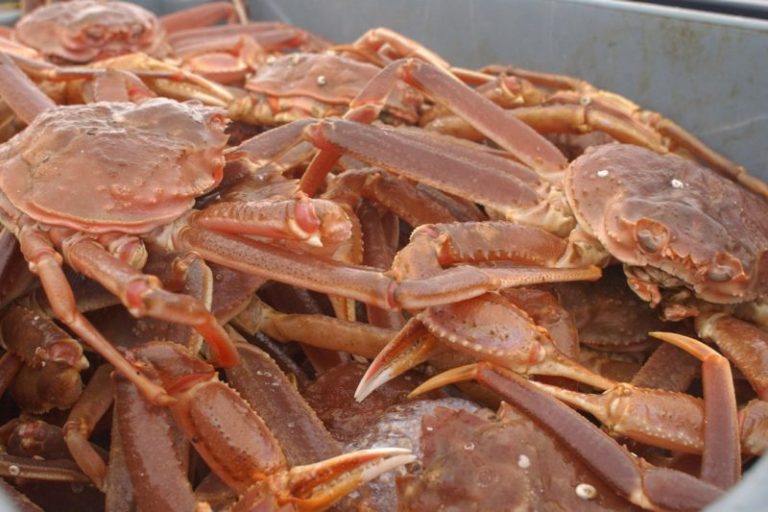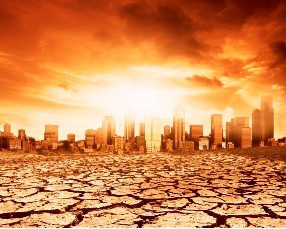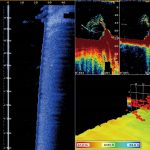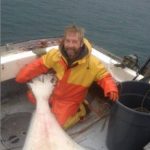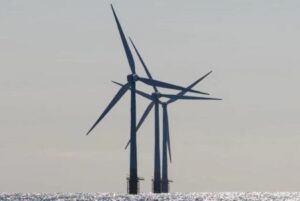Daily Archives: August 29, 2024
Why Is Cheap Wind Power So Expensive?
 Hmmm, sez I, seems a mite ambitious. Current US grid-connected offshore wind is a mere 0.17 gigawatts … so we’d need to do ~ 175 times as much as we’ve done to date and do it in a short six years. So, I divided it out. There are 65 months until 2030. Thirty gigawatts are thirty thousand megawatts, less the 174 megawatts in place, that’s 29,826 megawatts more total generating capacity needed. 29,826 megawatts divided by 65 months means we’d have to add offshore wind generation to the tune of 465 additional megawatts of generation capacity per month. Every month. Starting now. Get real. That’s not remotely possible. The biggest US offshore windfarm just came online, 132 MW capacity. To reach the White House goal, every month we’d need to build three new windfarms of that size. No way that can happen. It’s just numbers picked out of the air to gain popular support. more, >>CLICK TO READ<< 13:30
Hmmm, sez I, seems a mite ambitious. Current US grid-connected offshore wind is a mere 0.17 gigawatts … so we’d need to do ~ 175 times as much as we’ve done to date and do it in a short six years. So, I divided it out. There are 65 months until 2030. Thirty gigawatts are thirty thousand megawatts, less the 174 megawatts in place, that’s 29,826 megawatts more total generating capacity needed. 29,826 megawatts divided by 65 months means we’d have to add offshore wind generation to the tune of 465 additional megawatts of generation capacity per month. Every month. Starting now. Get real. That’s not remotely possible. The biggest US offshore windfarm just came online, 132 MW capacity. To reach the White House goal, every month we’d need to build three new windfarms of that size. No way that can happen. It’s just numbers picked out of the air to gain popular support. more, >>CLICK TO READ<< 13:30
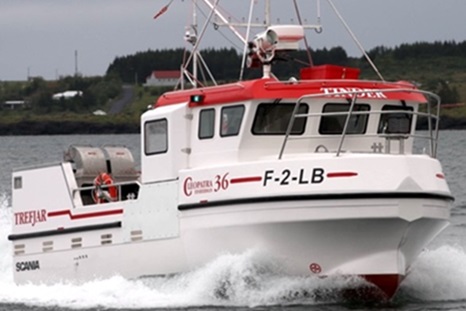
Norwegian fisherman’s new Cleopatra 36
Kjøllefjord skipper owner Daniel Lauritzen has taken delivery of a new Cleopatra 36 from Icelandic boatbuilder Trefjar. F/V Tinder is a standard Cleopatra 36 measuring 10.99 metres and with a 3.80-metre beam, and is rigged for longlining and gillnetting, and also ready for fishing king crab part of the year. The main engine is a 350hp Scania D9 driving a ZF286IV transmission, and a 9kW Nanni 9kW generator fitted in the engine room provides auxiliary power. more, >>CLICK TO READ<< 12:20
Klamath River and its salmon free-flowing after final two dams breached in California
 After more than a century of being blocked by a series of dams, the Klamath River is once again free flowing after two cofferdams in northern California were breached on Wednesday, according to the office of Governor Gavin Newsom. Letting the river flow without being constrained by dams gives native fish species, like steelhead, coho and Chinook salmon a chance to regain access to more than 400 miles of spawning and rearing habitat on the Klamath and its tributaries in California and Oregon. It allows Native American groups in the region like the Klamath, the Yurok and Karuk Tribes to regain access to culturally important food sources. The river was once a major habitat for salmon, but construction of hydroelectric dams in California and Oregon over the last century took a toll on water quality and reduced the population of the fish, which have to migrate to the Pacific Ocean, then return upstream to reproduce. The four dams on the river made that journey much more difficult. more, >>CLICK TO READ<< 10:54
After more than a century of being blocked by a series of dams, the Klamath River is once again free flowing after two cofferdams in northern California were breached on Wednesday, according to the office of Governor Gavin Newsom. Letting the river flow without being constrained by dams gives native fish species, like steelhead, coho and Chinook salmon a chance to regain access to more than 400 miles of spawning and rearing habitat on the Klamath and its tributaries in California and Oregon. It allows Native American groups in the region like the Klamath, the Yurok and Karuk Tribes to regain access to culturally important food sources. The river was once a major habitat for salmon, but construction of hydroelectric dams in California and Oregon over the last century took a toll on water quality and reduced the population of the fish, which have to migrate to the Pacific Ocean, then return upstream to reproduce. The four dams on the river made that journey much more difficult. more, >>CLICK TO READ<< 10:54
County residents butt heads with harbor commissioners over offshore wind
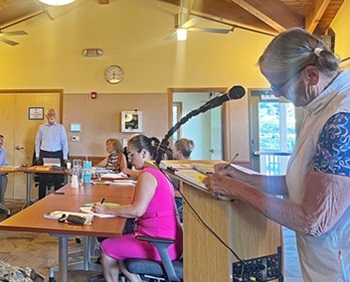 Unhappy residents accused Port San Luis Harbor District commissioners of being untruthful about their connections to offshore wind companies during a chaotic, heated Aug. 27 meeting. “I would like clarification on why several days before your last meeting [July 23] why Clean Energy Terminals had on their website that you were partners, in partnership, and that you had come to an agreement,” REACT Alliance President Mandy Davis asked during public comment. “It was there on their website and to refer to someone as a partner is very, very specific.” Davis’ comment comes a month after commissioners voted 3-2, with Commissioners Mary Matakovich and Jim Blecha dissenting, to collaborate with Clean Energy Terminals (CET) on studies focused on whether Port San Luis can be a potential site to support offshore wind development. more, >>CLICK TO READ<< 09:42
Unhappy residents accused Port San Luis Harbor District commissioners of being untruthful about their connections to offshore wind companies during a chaotic, heated Aug. 27 meeting. “I would like clarification on why several days before your last meeting [July 23] why Clean Energy Terminals had on their website that you were partners, in partnership, and that you had come to an agreement,” REACT Alliance President Mandy Davis asked during public comment. “It was there on their website and to refer to someone as a partner is very, very specific.” Davis’ comment comes a month after commissioners voted 3-2, with Commissioners Mary Matakovich and Jim Blecha dissenting, to collaborate with Clean Energy Terminals (CET) on studies focused on whether Port San Luis can be a potential site to support offshore wind development. more, >>CLICK TO READ<< 09:42
Do these Georgia waterways support “significant” commercial activity? A federal agency says no
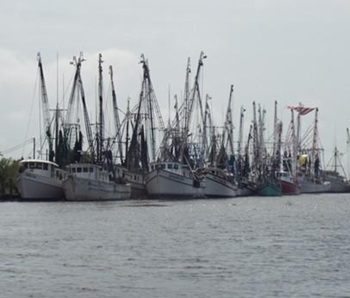 The U.S. Army Corps of Engineers says the agency hasn’t dredged nine Georgia waterways in decades – and there hasn’t been much impact as a result. So they’re considering asking Congress to de-authorize them from federal maintenance. But Georgia seafood harvesters and others say that’s not true. They argue that there’s plenty of commercial activity on Georgia’s smaller coastal waterways to justify keeping them authorized for future dredging. Charlie Phillips of Townsend, in northern McIntosh County, owns two seafood harvesting businesses, Phillips Seafood and Sapelo Sea Farms. “It’s going to need to be dredged sooner or later,” he said, noting that some areas on the Sapelo River already are troublesome for some boats at low tide. more, >>CLICK TO READ<< 08:41
The U.S. Army Corps of Engineers says the agency hasn’t dredged nine Georgia waterways in decades – and there hasn’t been much impact as a result. So they’re considering asking Congress to de-authorize them from federal maintenance. But Georgia seafood harvesters and others say that’s not true. They argue that there’s plenty of commercial activity on Georgia’s smaller coastal waterways to justify keeping them authorized for future dredging. Charlie Phillips of Townsend, in northern McIntosh County, owns two seafood harvesting businesses, Phillips Seafood and Sapelo Sea Farms. “It’s going to need to be dredged sooner or later,” he said, noting that some areas on the Sapelo River already are troublesome for some boats at low tide. more, >>CLICK TO READ<< 08:41
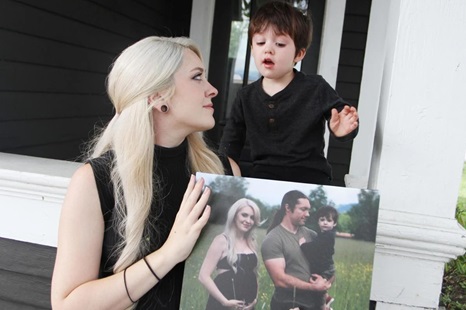
Everson man falls overboard commercial boat, dies
In the early hours of Saturday, Aug. 24, Cheyenne Hoy gave birth to her baby girl, Fiona Rose. Tragically, her husband Clayton was not able to be with his family. Hoy, a commercial fisherman, went missing on July 25 after he fell overboard his boat near Egegik, Alaska. On Aug. 12, he was confirmed dead. Cheyenne Hoy said Clayton “was our everything and sole provider for our family.” “He truly loved fishing and learned everything from his father,” Cheyenne said. Through his father, Guy Hoy, Clayton became a commercial salmon fisherman. Since age 15, he crewed with his father, then became his own captain. Cheyenne explained that 2024 was Clayton’s third year with his own boat and he “was already one of the top boats in the bay.” more, >>CLICK TO READ<< 07:12
Commercial fisherman Clayton Hoy, who went missing July 25 after a fall overboard near Egegik, was confirmed dead on August 12. Clayton Hoy, a 36-year-old from Washington, fell overboard from a commercial fishing boat, the F/V Warmaster. more, >>CLICK TO READ<< 18:14
Shetland MSP Raises Concerns Over Non-UK Fishing Vessels in Scottish Waters
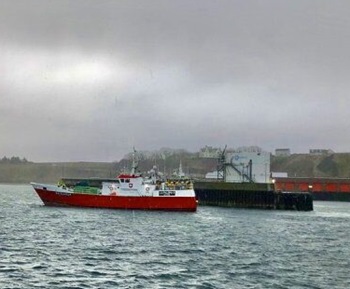 Beatrice Wishart, MSP for the Shetland Islands and member of the Scottish Liberal Democrats, has raised a series of questions in the Scottish Parliament regarding the monitoring and licensing of non-UK registered fishing vessels operating in Scottish waters. Wishart’s first question sought clarity on the number of non-UK registered vessels licensed to fish in Scottish waters. Gougeon responded by stating that the licensing of these vessels is managed by the UK Government’s Department for Environment, Food and Rural Affairs (DEFRA). As of August 12, 2024, there were 1,549 EU vessels, 213 Norwegian vessels, and 26 Faroese vessels with access licenses to fish in UK waters. This substantial number of foreign vessels highlights the significant presence of non-UK fleets in Scottish waters, raising questions about the impact on local fisheries and the effectiveness of monitoring and regulation. more, >>CLICK TO READ<< 06:21
Beatrice Wishart, MSP for the Shetland Islands and member of the Scottish Liberal Democrats, has raised a series of questions in the Scottish Parliament regarding the monitoring and licensing of non-UK registered fishing vessels operating in Scottish waters. Wishart’s first question sought clarity on the number of non-UK registered vessels licensed to fish in Scottish waters. Gougeon responded by stating that the licensing of these vessels is managed by the UK Government’s Department for Environment, Food and Rural Affairs (DEFRA). As of August 12, 2024, there were 1,549 EU vessels, 213 Norwegian vessels, and 26 Faroese vessels with access licenses to fish in UK waters. This substantial number of foreign vessels highlights the significant presence of non-UK fleets in Scottish waters, raising questions about the impact on local fisheries and the effectiveness of monitoring and regulation. more, >>CLICK TO READ<< 06:21


































